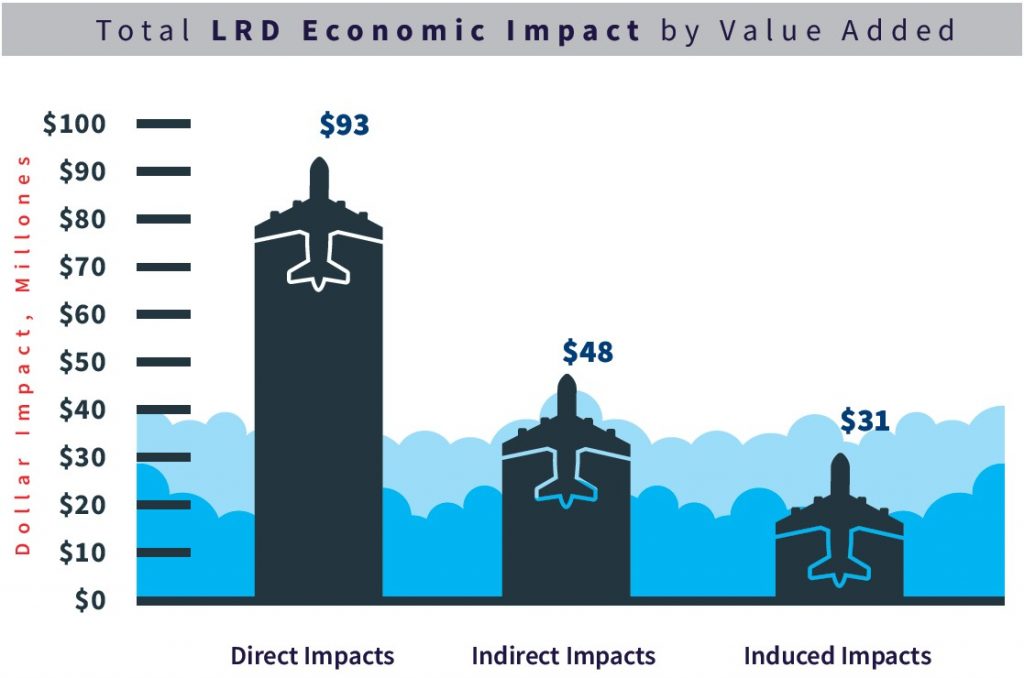Our Case Studies
Laredo International Airport
Laredo International Airport (LRD) is an essential part of transporting passengers and cargo in the Laredo region, which is home to the largest inland port on the U.S. – Mexico border. GRA quantified LRD’s impact in terms of employment, earnings, and economic output. Six different types of aviation activity were examined to determine their economic impact in terms of direct, indirect, and induced impacts. GRA estimated that LRD’s total economic impact was $272 million, driven by $172 million in added value.

Read the Laredo International Airport Economic Impact Study »
Houston Airport System
HAS requested an economic impact analysis of the three airports it operates, George Bush Intercontinental Airport, William P. Hobby Airport, and Ellington Airport. GRA examined the economic effects of the airports both on and off the airfields, including visitor expenditures, wages respent throughout the local economy, and detailed airport activity. Using state-of-the-art economic models, GRA determined the employment, earnings, and output impacts, concluding the total economic impact of HAS airports was $27 billion.
Read the Houston Airport System Economic Impact Study »
Federal Aviation Administration
PILOT FATIGUE RULE
The FAA began a rulemaking process to amend existing flight, duty and rest regulations applicable to flightcrew members of passenger air carriers governed by Part 121 of U.S. federal aviation regulations (14 CFR 121). The goals were to recognize factors leading to fatigue, eliminate distinctions between different types of operations, and create regulations that would limit fatigue risks based on the most recent scientific knowledge. GRA assisted the FAA throughout the rulemaking process, using proprietary models to estimate benefits and costs of the proposed regulations, including the cost impact on crew scheduling and expenditures that would be required to install or upgrade rest facilities on different types of aircraft. The series of analyses enabled the agency to revise the regulations to ensure benefits would exceed costs. GRA also assisted the FAA in developing a concise, transparent regulatory impact report documenting the results of the benefit-cost analyses. The final rule, Flightcrew Member Duty and Rest Requirements, made substantial changes to regulations governing flightcrew member flight, duty, and rest requirements.
Transportation Research Board, Airport Cooperative Research Program
GRA has conducted several studies for ACRP, including:
BUILDING AND MAINTAINING AIR SERVICE THROUGH INCENTIVE PROGRAMS
Read the report »
CLIMATE RESILIENCE AND BENEFIT-COST ANALYSIS
Read the report »
EFFECTS OF AIRLINE INDUSTRY CHANGES ON SMALL- AND NON-HUB AIRPORTS
Read the report »
Access the Data Appendix with detailed airport-specific data for the years 2001-2013 »
IMPACT OF JET FUEL PRICE UNCERTAINTY ON AIRPORT PLANNING AND DEVELOPMENT
Read the report »
Access the computer model »


